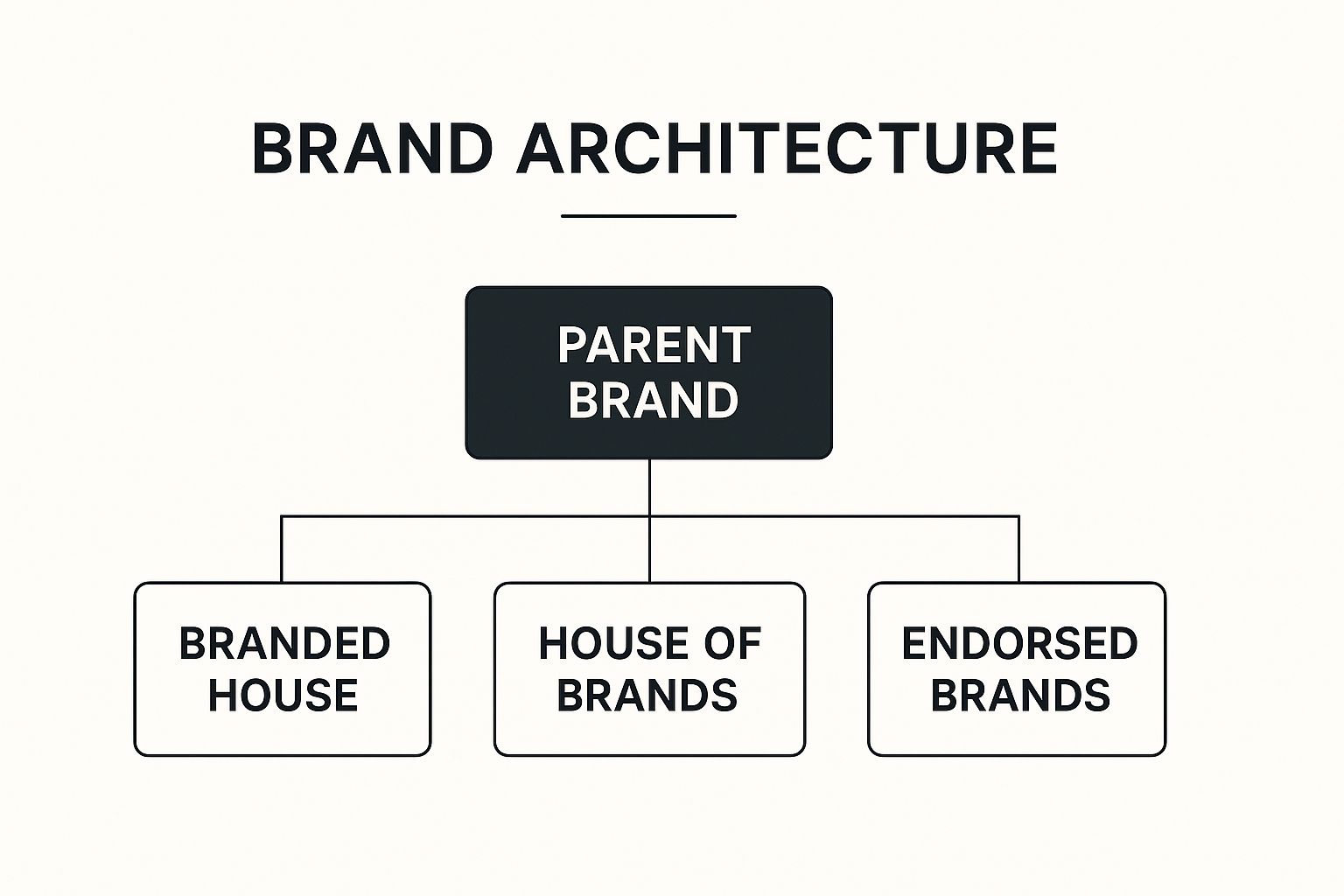Henri's 8 Steps to a Powerful Brand
Ready to build a brand that truly shines? Whether you're a solopreneur, creator, career pivoter, coach, or simply seeking more purpose in your work, understanding the elements of brand strategy is crucial for success. This concise guide provides Henri Den’s eight core principles—refined over 20 years—to craft a compelling personal brand. These steps helped him transition from employee to entrepreneur, and they’ll empower you to build a brand with clarity, purpose, and lasting impact. Learn how to define your brand purpose, positioning, identity, architecture, personality, story, experience, and measurement. Let's dive in!
1. Brand Purpose: The Heart of Your Brand Strategy
Brand purpose sits at the very core of a powerful brand strategy. It's the driving force, the "why" behind your existence that goes beyond simply generating profit. It articulates the positive impact you aim to make on the world and resonates with the deep-seated values and beliefs that fuel your business. A clearly defined brand purpose not only informs every facet of your brand but also forges profound emotional connections with your audience, turning customers into passionate advocates and employees into inspired ambassadors. This is crucial for solopreneurs, aspiring creators, career pivoters, coaches, consultants, and purpose-driven professionals alike – it provides the compass that guides you towards true north.

Think of your brand purpose as the soul of your business. It's what sets you apart in a crowded marketplace and gives your audience a reason to choose you over the competition. It acts as a decision-making filter, ensuring all actions align with your core values. This consistency over time builds trust and strengthens your brand identity, especially valuable for those building a service business or establishing a personal brand online. It’s the unwavering foundation upon which your brand is built, providing direction even amidst change.
Features of a strong brand purpose include articulating your reason for existence beyond profit, connecting to a social or human impact, serving as a filter for decisions, remaining consistent, and differentiating you from competitors. These features are vital for anyone seeking to create a compelling and resonant brand.
Examples of brands living their purpose:
- Patagonia: "We're in business to save our home planet." This powerful statement resonates deeply with environmentally conscious consumers, guiding Patagonia's product development, activism, and overall brand experience.
- TOMS Shoes: The "One for One" giving model inherently links the purchase of a product with a social good, creating a compelling narrative that attracts customers who value social impact.
- Tesla: "To accelerate the world's transition to sustainable energy." This purpose drives innovation and fuels Tesla's mission to reshape the automotive industry and the future of energy consumption.
- Dove: The "Real beauty" campaign challenged beauty stereotypes and fostered a more inclusive definition of beauty, deeply resonating with a broad audience and strengthening brand loyalty.
Pros of a clearly defined brand purpose:
- Deeper emotional connections: Resonating with your audience on a values level fosters lasting relationships.
- Brand loyalty beyond product features: Purpose creates a connection that transcends transactional exchanges.
- Attracting and retaining value-aligned employees: A strong purpose attracts talent who share your values.
- Providing direction during organizational change: Purpose acts as a compass during times of transition.
- Premium pricing capability: Customers are often willing to pay more for brands aligned with their values.
Cons to consider:
- Inauthenticity: If your purpose isn't genuinely implemented, it can backfire and damage your brand.
- Uniqueness: Creating a truly unique purpose can be challenging.
- Limited flexibility: A too narrowly defined purpose can restrict business opportunities.
- Organizational commitment: Living your purpose requires buy-in and action at all levels of the organization.
Actionable Tips for Defining Your Brand Purpose:
- Start with "why": Ask yourself why your organization exists beyond profit. What positive change do you want to create in the world?
- Align with actions: Ensure your purpose aligns with your actual business practices.
- Involve your team: Engage employees in the purpose definition process for better buy-in.
- Measure impact: Create metrics to measure the success of your purpose-driven initiatives.
- Communicate consistently: Share your purpose across all touchpoints – your website, social media, marketing materials, and internal communications.
By grounding your brand in a powerful purpose, you create a strong foundation for growth, attract loyal customers and employees, and build a brand that truly makes a difference. This element of brand strategy is not just a nice-to-have; it's a necessity for building a thriving, resilient, and impactful brand in today's world. It's the heart and soul of your business, the reason you do what you do, and the driving force that will propel you forward.
2. Brand Positioning
Brand positioning is the cornerstone of a powerful brand strategy, carving out a distinct space for your business in the crowded marketplace. It's the art of defining not just what you do, but who you are for your ideal customers and why they should choose you over the competition. Think of it as strategically placing your brand in the minds of your target audience, ensuring they perceive you exactly how you intend. Effective brand positioning clarifies your value proposition, making you instantly recognizable and undeniably attractive to the right people. It answers the fundamental question: "Why should a customer choose you?" It's the foundation upon which all other elements of your brand strategy are built – from your messaging and marketing to your product development and customer experience. This is crucial for solopreneurs, aspiring creators, career pivoters, coaches, consultants, and purpose-driven professionals alike, helping them stand out and attract their ideal clients.

Brand positioning works by identifying a specific niche within your market and then highlighting the unique differentiators that set you apart. It’s about understanding your target audience’s deepest needs and desires, and showcasing how your brand fulfills those needs better than anyone else. This process involves crafting a clear and compelling message that resonates with your target audience, creating a memorable mental “position” that sticks with them. This distinct position serves as a guiding star for all your marketing efforts, ensuring consistency and impact. It also informs product development, guiding innovation toward what truly matters to your customers.
Examples of Successful Brand Positioning:
- Volvo: By consistently emphasizing safety features and robust engineering, Volvo has cemented its position as the safest car brand, attracting customers who prioritize security above all else.
- Apple: Focusing on sleek design, user-friendly interfaces, and innovative technology, Apple has cultivated a premium brand image that appeals to those seeking cutting-edge, stylish products.
- Southwest Airlines: Positioning themselves as the fun, low-cost airline differentiates them from competitors and attracts budget-conscious travelers seeking a more enjoyable flying experience.
- Whole Foods: By focusing on organic, high-quality products and catering to a health-conscious clientele, Whole Foods has positioned itself as the premium grocer for those prioritizing healthy living.
Actionable Tips for Effective Brand Positioning:
- Craft a Positioning Statement: Condense your brand essence into a concise statement that identifies your target audience, category, differentiation, and key benefits.
- Competitive Analysis: Research your competitors’ positioning to identify gaps and opportunities in the market. What unmet needs can your brand address?
- Customer Validation: Test your positioning with your target audience. Does it resonate with them? Does it accurately reflect their perceptions of your brand?
- Credibility and Sustainability: Ensure your positioning is believable and something you can deliver on consistently. It should also be adaptable to market changes over time.
- Regular Review: Markets evolve, so your positioning should too. Regularly review and refine your positioning to stay relevant and competitive.
Pros and Cons of Defining Your Brand Positioning:
Pros:
- Clarified Competitive Advantage: Makes it clear why customers should choose you.
- Focused Marketing Resources: Enables targeted and efficient marketing efforts.
- Enhanced Memorability: Helps your brand stick in the minds of your target customers.
- Guided Innovation: Informs product development and ensures it aligns with customer needs.
- Simplified Decision-Making: Makes it easier for customers to choose your brand over others.
Cons:
- Limited Growth Potential: Positioning too narrowly can restrict expansion into new markets.
- Ongoing Maintenance: Requires consistent effort to maintain and reinforce your position.
- Difficult Repositioning: Changing a well-established position can be challenging.
- Potential Alienation: May exclude potential customers outside your target segment.
Brand positioning deserves a prominent place in any brand strategy because it's the guiding principle for all other brand-building activities. It provides clarity, focus, and direction, enabling you to connect with your ideal customers on a deeper level and build a truly impactful brand. For anyone building a service business, creating online content, pivoting careers, or simply seeking more meaning in their work, brand positioning is essential for standing out, attracting the right clients, and achieving lasting success. It empowers you to take control of your narrative and build a brand that resonates with your purpose and values.
3. Brand Identity
Brand identity is the bedrock of your brand strategy, the tangible embodiment of your values, mission, and personality. It’s the face you present to the world, the voice you use to communicate, and the feeling you evoke in your audience. A strong brand identity doesn't just make you recognizable; it creates a powerful connection with your ideal clients, fostering trust and loyalty that translates into long-term success. It's a vital element of any successful brand strategy, whether you're a solopreneur building a service business, a creator crafting engaging content, or a career pivoter seeking a fresh start.

Brand identity encompasses the visual, verbal, and experiential elements that represent your brand. Think of it as a cohesive ecosystem of elements working together to create a unified and memorable brand experience. Visually, this includes your logo, color palette, typography, and imagery – the aesthetic elements that instantly communicate your brand's essence. Verbally, it’s your brand name, tagline, tone of voice, and the messaging you use across all platforms. Experientially, it extends to your packaging, physical environments (if applicable), and digital interfaces, creating a holistic brand experience. For example, consider the sleek minimalism of Apple's products and stores, or the vibrant energy of a Red Bull sponsored event. Each element contributes to a distinct and memorable brand experience.
Features of a Strong Brand Identity:
- Visual Elements: Logo, color palette, typography, imagery
- Verbal Elements: Brand name, tagline, tone of voice, messaging
- Experiential Elements: Packaging, physical environments, digital interfaces, customer service
- Systematic Design Guidelines: A comprehensive document ensuring consistency
- Multi-sensory Brand Cues: Consider how your brand translates across senses
Why is Brand Identity crucial for your success?
For solopreneurs and consultants, a compelling brand identity differentiates you from the competition, attracting the right clients and establishing you as a leader in your field. Aspiring creators can leverage a distinct brand identity to build a loyal following and stand out in a crowded digital landscape. Career pivoters can use it to craft a compelling narrative that showcases their unique skills and experience. Coaches and purpose-driven professionals can connect with their target audience on a deeper level, building trust and driving meaningful impact.
Pros of a Well-Defined Brand Identity:
- Instant Recognition: Your brand becomes instantly recognizable in a crowded marketplace.
- Trust Building: Consistency across all touchpoints builds trust and credibility with your audience.
- Non-Verbal Communication: Your visuals and tone of voice communicate your brand values effectively.
- Differentiation: A strong identity sets you apart from competitors, highlighting your unique strengths.
- Brand Protection: Trademarks and copyrights protect your brand from imitation.
Cons to Consider:
- Cost: Developing a high-quality brand identity can require an investment.
- Management: Maintaining consistency across all channels requires ongoing effort and attention.
- Refreshments: Periodic updates may be necessary to stay relevant and appealing.
- Rigidity: Overly strict brand guidelines can stifle creativity and adaptability.
Actionable Tips for Building Your Brand Identity:
- Develop Comprehensive Brand Guidelines: Document every aspect of your visual and verbal identity.
- Ensure Cross-Platform Consistency: Your identity should translate seamlessly across all digital and physical touchpoints.
- Test for Cultural Sensitivity: Consider how your brand will be perceived in different cultures if you have a global audience.
- Balance Consistency with Flexibility: Allow room for adaptation while maintaining core elements.
- Consider Sensory Experiences: Think beyond the visual. How does your brand sound, feel, even smell?
Examples of successful brand identity implementation include iconic brands like Coca-Cola (distinctive red and white, script logo), Nike ("Just Do It" tagline and swoosh), and Tiffany & Co. (signature blue packaging). These brands have mastered the art of creating a cohesive and recognizable identity that resonates with their target audience. By focusing on building a strong brand identity, you are investing in the long-term success and sustainability of your venture, creating a brand that not only stands out but also stands the test of time.
4. Brand Architecture: The Blueprint of Your Brand Success
Brand architecture, a crucial element of brand strategy, is the structured organization of a company's brands, sub-brands, products, and services. It's the blueprint that defines how different brand entities relate to each other, creating a logical and cohesive framework. Think of it as the family tree of your brand, showing how everything connects and contributes to the overall brand story. Effective brand architecture not only clarifies your brand identity for customers but also empowers you to maximize brand equity and guide future growth. Whether you're a solopreneur building a service business, a content creator defining your niche, or a career pivoter crafting a personal brand, understanding brand architecture is paramount to standing out in a crowded marketplace.

This infographic visualizes a simplified brand architecture hierarchy, demonstrating how a parent brand can house various sub-brands and product lines. It emphasizes the importance of a clear and organized structure for effective brand management. Notice how the visual hierarchy allows for both brand clarity and efficient extension into new markets.
Features and Benefits:
Brand architecture doesn't just organize; it empowers. Key features include defining relationships between your primary brand and any sub-brands or product lines, establishing naming conventions, creating a visual hierarchy across all brand elements, guiding brand extension strategies, and establishing rules for endorsements or co-branding. These features translate into powerful benefits, including maximizing the transfer of brand equity across your offerings, reducing customer confusion, providing a framework for new product launches or even acquisitions, optimizing your marketing spend across your entire portfolio, and creating internal clarity for your team (or future team).
When and Why to Use This Approach:
Building a brand without a clear architecture is like building a house without a blueprint. Whether you're just starting out or looking to refine your existing brand, a well-defined architecture is essential. For solopreneurs, it ensures consistent messaging across different service offerings. For content creators, it helps cultivate a cohesive brand identity across various platforms. For career pivoters, a strong brand architecture clarifies their unique value proposition. And for coaches and consultants, it helps attract the ideal clients by projecting a clear and compelling brand image.
Examples of Success:
Consider the diverse empires of Procter & Gamble (with its "house of brands" strategy for Tide, Pampers, and Gillette) or the Virgin Group, which leverages a branded house model across a wide array of industries. These examples demonstrate the power of a well-defined brand architecture in managing diverse portfolios and maximizing brand reach. FedEx, with its endorsed brands like FedEx Express and FedEx Ground, shows the strength of a hierarchical structure. Even giants like Google, transitioning to Alphabet as a parent company, highlight the evolving nature of brand architecture and its importance for long-term growth.
Pros and Cons:
While the benefits of a strong brand architecture are numerous, it’s important to acknowledge potential challenges. Implementing a cohesive architecture across a larger organization can be complex. Once established, it can be difficult to modify. Overly broad brand extensions can dilute your core brand meaning. Maintaining consistency across your architecture also requires ongoing investment. However, these challenges are far outweighed by the long-term benefits of a well-structured brand.
Actionable Tips for Implementing Brand Architecture:
- Audit Your Current Brand Portfolio: Before designing your architecture, take stock of your existing brands, sub-brands, and product lines.
- Customer-Centric Approach: Prioritize the customer perspective when making architectural decisions. How will your structure impact their understanding and experience of your brand?
- Balance Short-Term and Long-Term Goals: Align your architecture with both immediate marketing needs and long-term brand building objectives.
- Clear Guidelines: Establish clear guidelines for introducing new brands or products within your architecture.
- Regular Review: As your business evolves, regularly review and adapt your brand architecture to maintain its relevance and effectiveness.
By incorporating these tips and understanding the principles of brand architecture, you can build a powerful and enduring brand that resonates with your target audience, drives growth, and sets you apart from the competition. This element of your brand strategy is not just recommended—it's essential.
5. Brand Personality: The Human Touch in Your Brand Strategy
Brand personality is a crucial element of brand strategy, breathing life into your business and forging genuine connections with your audience. It's the set of human characteristics and traits attributed to your brand, shaping how you communicate, behave, and interact with customers. Think of it as the soul of your brand, adding a layer of emotional connection that transcends mere functional benefits. This is especially critical for solopreneurs, aspiring creators, career pivoters, coaches/consultants, and purpose-driven professionals seeking to resonate deeply with their target audience.
Imagine your brand as a person. Would they be witty and playful, or serious and sophisticated? Bold and adventurous, or calm and nurturing? This humanization is key to making your brand relatable and memorable, a vital aspect of any successful brand strategy. By injecting personality into your brand, you're not just selling a service or product; you're offering an experience, a feeling, a connection.
Why Brand Personality Deserves Its Place in Your Brand Strategy:
In a crowded marketplace, differentiation is key. Brand personality acts as a powerful differentiator, helping you stand out from competitors, even in commoditized categories. It allows you to connect with your audience on a deeper, emotional level, fostering loyalty and advocacy. For solopreneurs building service businesses, this translates to attracting clients who resonate with your values and style. For aspiring creators, it helps define a unique voice and build a loyal following. And for career pivoters, it allows you to present a compelling personal brand that reflects your authentic self.
Features and Benefits of a Well-Defined Brand Personality:
- Humanized Connection: By imbuing your brand with human-like traits, you move beyond transactional interactions and create genuine emotional connections with your customers.
- Memorable Identity: A distinct personality makes your brand easily recognizable and memorable, a critical factor for building long-term brand equity.
- Consistent Communication: Brand personality guides consistent messaging and tone of voice across all touchpoints, ensuring a unified brand experience.
- Targeted Appeal: A well-defined personality helps you attract the right customers – those who align with your brand values and resonate with your brand's character.
Pros and Cons of Leveraging Brand Personality:
Pros:
- Creates emotional connection beyond functional benefits
- Helps brands stand out in commoditized categories
- Makes brands more memorable and recognizable
- Guides consistent communication across channels
- Appeals to customers on a deeper psychological level
Cons:
- Can feel forced or inauthentic if not executed well
- May limit brand appeal to certain customer segments
- Difficult to evolve without alienating existing customers
- Challenging to maintain consistency across all touchpoints
Examples of Successful Brand Personality Implementation:
- Apple: Creative, innovative, and slightly rebellious.
- Harley-Davidson: Rugged, freedom-loving, and individualistic.
- Disney: Magical, wholesome, and family-oriented.
- Old Spice: Humorous, masculine, and slightly absurd.
These brands demonstrate how a well-defined personality can resonate with specific audiences and create lasting brand loyalty.
Actionable Tips for Defining Your Brand Personality:
- Define 3-5 Core Personality Traits: Choose traits that reflect your brand's values and resonate with your target audience. Be specific about the behaviors associated with each trait.
- Create Tone of Voice Guidelines: Develop guidelines that capture your brand's personality in writing, ensuring consistent communication across all platforms.
- Align with Target Audience Values: Ensure your brand personality aligns with the values and aspirations of your ideal customers.
- Train Your Team (if applicable): If you have a team, train them to embody your brand personality in their interactions with customers.
- Use Consistent Visual Cues: Reinforce your personality traits with consistent visual elements, such as color palettes, typography, and imagery.
By strategically crafting your brand personality, you can transform your brand from a nameless entity into a relatable, memorable, and engaging force that connects with your audience on a human level. This human touch is an invaluable element of brand strategy, particularly for those building a business from the ground up or seeking to reposition themselves in the market. It's the secret ingredient that will help you build a brand that resonates, inspires, and endures.
6. Brand Story: The Heart of Your Brand Strategy
A compelling brand story is a vital element of brand strategy, especially for solopreneurs, aspiring creators, career pivoters, coaches/consultants, and purpose-driven professionals seeking to make a genuine connection with their audience. It’s the narrative thread that weaves together your history, purpose, values, and vision, transforming facts into an emotional journey that resonates deeply. Think of it as the heartbeat of your brand, giving life and meaning to everything you do. A strong brand story doesn't just inform; it inspires, persuades, and ultimately, converts. It’s what separates you from the noise and cements your place in the hearts and minds of your ideal clients.
What it is and How it Works:
Brand story goes beyond simply stating what your business does. It delves into the why behind your existence. It answers the questions: How did your brand come to be? What problem are you solving? What values drive you? It’s about creating a narrative that resonates with your target audience on an emotional level, building trust and forging a lasting connection. By humanizing your brand, you make it relatable and memorable, allowing your audience to see themselves reflected in your journey.
Features of a Compelling Brand Story:
- Origin Narrative: Share the "aha!" moment, the initial spark that ignited your passion and led to the creation of your brand.
- Character Development: Introduce the key players – yourself, your team, and, most importantly, your customer (as the hero of your story). Showcase their struggles, aspirations, and transformations.
- Conflict and Resolution: Every good story has challenges. Highlight the obstacles you've faced and how you've overcome them, demonstrating resilience and inspiring your audience.
- Values and Beliefs: Integrate your core values organically into the narrative. Let them shine through your actions and decisions, demonstrating your commitment to your mission.
- Consistent Storyline: Ensure your brand story remains consistent across all touchpoints – your website, social media, marketing materials, and even your personal interactions.
Examples of Successful Implementation:
- TOMS Shoes: The story of Blake Mycoskie's trip to Argentina and his subsequent mission to provide shoes for children in need is deeply embedded in the TOMS brand, driving both emotional connection and customer loyalty.
- Apple: The narrative of two guys in a garage challenging the status quo resonated with those who sought innovation and creativity.
- Airbnb: The story of how Airbnb started – by offering air mattresses on a living room floor – is a testament to its disruptive spirit and its focus on community and belonging.
Actionable Tips for Crafting Your Brand Story:
- Focus on Authenticity: Share genuine stories and experiences that reflect your true character and values. Avoid manufactured narratives that feel contrived.
- Incorporate Customer Stories: Showcase how your brand has impacted the lives of your customers. Their stories add credibility and emotional weight to your narrative.
- Create Modular Story Elements: Adapt your story for different platforms and contexts. A concise version may work for social media, while a longer, more detailed version might be appropriate for your website's "About Us" section.
- Evolve Your Story: As your brand grows and evolves, so should your story. Maintain the core truths, but allow room for new chapters and experiences.
- Train Your Team: Equip everyone in your organization with the knowledge and ability to share the brand story effectively.
Pros and Cons:
Pros:
- Creates deep emotional connections with your target audience.
- Makes your brand values and mission more memorable.
- Differentiates you from competitors in authentic ways.
- Provides context for your brand's actions and communications.
- Helps internal teams understand and embody your brand purpose.
Cons:
- Can become outdated if not regularly reviewed and updated.
- May be perceived as inauthentic if not genuinely crafted.
- Can be challenging to maintain consistency across global markets.
- Difficult to measure direct business impact.
Why Brand Story Deserves its Place in Your Brand Strategy:
In a crowded marketplace, a compelling brand story is your secret weapon. It’s what allows you to connect with your audience on a human level, building trust, fostering loyalty, and ultimately, driving business growth. For solopreneurs, creators, and anyone seeking to build a brand with purpose, a well-crafted brand story is an essential element of a successful brand strategy. It provides the foundation for everything you do, ensuring that your message resonates and your brand stands out.
7. Brand Experience: Crafting Memorable Connections
Brand experience is the secret sauce that transforms a simple transaction into a lasting relationship. It's the sum total of every interaction a customer has with your brand – from the moment they discover you online to the way they feel when using your product or service. As a crucial element of brand strategy, it encompasses the physical, digital, emotional, and sensory dimensions of engagement, shaping how your audience perceives your brand and ultimately, their decision to choose you over the competition. In today's crowded marketplace, a well-crafted brand experience is no longer a luxury; it's a necessity for businesses of all sizes, particularly for solopreneurs, creators, and career pivoters seeking to establish a strong and distinctive presence.
For solopreneurs building service businesses, brand experience is your differentiator. It's what sets you apart in a sea of similar offerings. For aspiring creators posting content, it's the glue that binds your audience to you, transforming casual viewers into loyal followers. And for career pivoters starting anew, it's the foundation upon which you build a compelling and authentic personal brand.
How Does It Work?
Strategic brand experience design involves carefully orchestrating every touchpoint to deliver on your brand promise and create a cohesive, memorable journey for your customers. This includes:
- Multi-sensory Engagement: Consider how your brand engages all senses. What do customers see, hear, feel, and even smell when interacting with your brand?
- Consistent Experience: Maintain a consistent brand identity and message across all platforms – from your website and social media to your customer service interactions and physical spaces (if applicable).
- Customer Journey Mapping: Understand the steps your customers take when engaging with your brand. Identify pain points and opportunities to enhance their experience at each stage.
- Physical and Digital Environment Design: If you have a physical space, design it to reflect your brand values and create a welcoming atmosphere. Similarly, ensure your website and digital platforms are user-friendly and visually appealing.
- Employee Training (For Teams): Equip your team with the knowledge and skills to deliver exceptional, on-brand customer service. For solopreneurs, this translates to embodying your brand values in every interaction.
Examples of Success:
Think of Apple's meticulously designed retail stores and Genius Bar service, the immersive world of Disney's theme parks, or the "third place" atmosphere cultivated by Starbucks. These brands have mastered the art of creating memorable experiences that go beyond their core products. Sephora, for example, combines interactive testing and personalized recommendations with a robust loyalty program to create a highly engaging and personalized experience. These are powerful examples of how a thoughtfully designed brand experience can foster deep customer loyalty.
Actionable Tips for Building Your Brand Experience:
- Map the Journey: Identify all customer touchpoints and prioritize high-impact moments. Where can you make the biggest difference?
- Signature Interactions: Design unique interactions that set you apart from the competition. What can you offer that others don't?
- Sensory Guidelines: Create guidelines for consistent multi-sensory experiences. What feeling do you want to evoke?
- Consistent Delivery: Ensure you (and your team, if applicable) consistently deliver on-brand experiences. Does every interaction reflect your brand values?
- Feedback is Gold: Regularly gather customer feedback to refine your experience design. What are your customers saying?
Pros and Cons of Investing in Brand Experience:
Pros:
- Meaningful Differentiation: Stand out from the competition by offering more than just a product or service.
- Emotional Connection: Forge deeper relationships with customers through memorable interactions.
- Increased Loyalty: Cultivate loyal customers who return again and again.
- Positive Word-of-Mouth: Generate positive buzz and organic advocacy.
- Premium Pricing: Justify higher prices through a superior customer experience.
Cons:
- Cross-Functional Coordination: Requires careful planning and execution across all areas of your business.
- Costly Implementation: Can be expensive to implement and maintain, especially as your business grows.
- Evolving Expectations: Customer expectations are constantly changing, requiring ongoing adaptation.
- ROI Measurement: Measuring the return on investment of experience initiatives can be challenging.
Why Brand Experience Deserves its Place:
In a world increasingly driven by experiences, brand experience is no longer a "nice-to-have" but a fundamental element of brand strategy. It's the key to building a loyal customer base, fostering emotional connections, and ultimately, achieving long-term success. For those building a personal brand, especially solopreneurs, creators, and career pivoters, investing in brand experience is an investment in your future. By crafting memorable and meaningful interactions, you create a brand that resonates deeply with your audience, setting you up for sustainable growth and a fulfilling career journey. This concept has been popularized by thinkers like Joseph Pine and James Gilmore (The Experience Economy) and Bernd Schmitt, as well as organizations like IDEO, Zappos, and Ritz-Carlton.
8. Brand Measurement: Proving Your Brand's Power
Brand measurement is the compass and map of your brand journey. It's the systematic process of tracking and evaluating your brand's performance against the strategic objectives you've set, ensuring you're on the right path to achieving your vision. As one of the core elements of brand strategy, it empowers you to demonstrate the tangible impact of your brand-building efforts, transforming your brand from an intangible asset into a powerful engine for growth. This is crucial for solopreneurs, aspiring creators, career pivoters, coaches, consultants, and purpose-driven professionals alike, allowing you to justify investments, refine your strategy, and ultimately, build a brand that resonates deeply with your target audience.
How it Works:
Brand measurement combines both quantitative and qualitative metrics to paint a complete picture of your brand's health. This involves assessing key areas such as:
- Brand Awareness: How familiar are people with your brand?
- Brand Perception: What do people think and feel about your brand?
- Brand Loyalty: How likely are customers to choose your brand over competitors?
- Brand Equity: What is the overall value of your brand?
- Business Impact: How does your brand contribute to your bottom line?
Effective brand measurement links your brand activities directly to business outcomes, providing clear, data-driven insights that guide strategic decision-making for your brand investments. It empowers you to optimize your efforts, focusing on what truly moves the needle for your business.
Examples of Success:
Consider the power of brand measurement in action:
- Interbrand's Best Global Brands and Millward Brown's BrandZ frameworks demonstrate how brand valuation can highlight the financial strength of a strong brand.
- Apple's implementation of the Net Promoter Score (NPS) reveals how customer loyalty translates to sustained market leadership.
- Nike's meticulous brand health tracking, correlating directly with market share, shows how consistent measurement fuels continuous growth.
These examples showcase how a data-driven approach to brand building can lead to remarkable results, inspiring you to harness the same power for your own brand.
Actionable Tips for Measuring Your Brand:
- Create a Balanced Scorecard: Develop a set of key performance indicators (KPIs) aligned with your specific business goals. This might include website traffic, social media engagement, customer satisfaction scores, and sales conversions.
- Establish a Consistent Cadence: Track your metrics regularly (e.g., monthly, quarterly) to identify trends and patterns. This consistent monitoring enables you to adapt and refine your strategies over time.
- Embrace Both Perception and Behavior: Don't just measure what people say about your brand, but also what they do. Observe their purchasing habits, engagement patterns, and online interactions.
- Benchmark Against Competitors: Understand how your brand stacks up against the competition. This helps identify areas where you excel and where you need to improve.
- Connect Brand to Financials: Whenever possible, link your brand metrics to tangible financial outcomes, demonstrating the return on investment (ROI) of your brand-building efforts.
Pros and Cons:
While invaluable, brand measurement also presents certain challenges:
Pros:
- Demonstrates brand contribution to business value
- Identifies strengths and weaknesses
- Guides resource allocation
- Justifies brand investment
- Enables continuous improvement
Cons:
- Difficulty isolating brand impact from other factors
- Quantifying intangible brand elements
- Requires investment in research
- Potential for short-term focus with poorly chosen metrics
- Different stakeholder priorities
When and Why to Use Brand Measurement:
Brand measurement is essential throughout your brand's lifecycle, particularly for:
- Launching a new brand: Establish a baseline and track early progress.
- Rebranding or repositioning: Measure the effectiveness of your changes.
- Entering new markets: Understand how your brand resonates with new audiences.
- Evaluating marketing campaigns: Assess the impact of your marketing efforts on brand perception and awareness.
- Securing funding: Demonstrate the value and potential of your brand to investors.
By embracing brand measurement as an integral element of your brand strategy, you gain the clarity and control needed to build a truly impactful brand. It empowers you to make informed decisions, optimize your efforts, and ultimately, achieve your brand's full potential. This is especially valuable for those navigating the complexities of building a service business, establishing a personal brand, or pivoting their career. Brand measurement gives you the data-driven insights you need to stand out, connect with your audience, and build a brand that thrives.
8 Key Elements of Brand Strategy Comparison
| Strategy | Implementation Complexity 🔄 | Resource Requirements ⚡ | Expected Outcomes 📊 | Ideal Use Cases 💡 | Key Advantages ⭐ |
|---|---|---|---|---|---|
| Brand Purpose | Medium – requires deep organizational commitment and alignment | Medium – involves time for cultural integration and communication | Strong emotional connections, brand loyalty, premium pricing potential | Organizations seeking meaningful differentiation and employee engagement | Builds long-term loyalty and guides strategic decisions |
| Brand Positioning | Medium – requires market research and regular updates | Medium – research, messaging, and monitoring | Clear competitive advantage, focused marketing, product guidance | Brands entering competitive markets needing clear differentiation | Enhances memorability and customer decision-making |
| Brand Identity | Medium to High – involves multidisciplinary design and management | High – design, production, and consistent implementation | Instant recognition, trust, visual differentiation | Businesses building or refreshing visual/verbal brand elements | Establishes consistent, recognizable visual and verbal brand presence |
| Brand Architecture | High – complex structuring across multiple brands/products | High – strategic planning, alignment, and ongoing governance | Customer clarity, brand equity optimization, streamlined expansion | Large, multi-brand companies managing diverse portfolios | Maximizes brand equity transfer and reduces market confusion |
| Brand Personality | Medium – defining traits and consistent expression | Medium – creative development and staff training | Strong emotional bonds, differentiated brand character | Brands aiming for relatable, humanized connection with customers | Creates memorable, relatable, and emotionally engaging brand |
| Brand Story | Medium – crafting authentic narratives and consistent storytelling | Medium – content creation, training, and distribution | Emotional engagement, distinct brand voice, internal alignment | Brands wanting to humanize and differentiate through narrative | Strengthens emotional resonance and communicates brand values |
| Brand Experience | High – coordination across multiple touchpoints and teams | High – cross-functional collaboration and environment design | Memorable interactions, increased loyalty, premium pricing justification | Companies focused on holistic customer journey and differentiation | Delivers superior customer loyalty through consistent, memorable experiences |
| Brand Measurement | High – involves complex data collection and analysis | High – ongoing research and analytics investment | Data-driven insights, resource optimization, business impact tracking | Organizations requiring evidence-based brand performance management | Connects brand efforts directly to business outcomes |
Building Your Brand with Clarity and Purpose
From defining your core purpose to measuring your brand's impact, understanding the eight elements of brand strategy we've explored—brand purpose, positioning, identity, architecture, personality, story, experience, and measurement—is crucial for building a thriving brand. These elements are not isolated concepts but interconnected pieces of a larger puzzle. By focusing on each of these areas, you can create a cohesive and compelling brand experience that resonates deeply with your target audience, whether you're a solopreneur, aspiring creator, career pivoter, coach, or simply a purpose-driven professional seeking more meaning in your work. Mastering these concepts empowers you to not just be another voice in the crowd, but to stand out as a leader in your field, attracting the right clients and opportunities. Building a strong brand requires a holistic approach, encompassing all the elements discussed above. For a deeper dive into expert strategies for brand building, consider exploring resources like building a strong brand.
Remember, your brand is more than just a logo or a tagline. It's the essence of who you are, what you stand for, and the value you bring to the world. Embracing these elements of brand strategy enables you to craft a brand that authentically reflects your unique story and resonates deeply with your audience, ultimately fueling your success. Now, take the next step and transform your vision into a powerful brand with Henri Den, a platform designed to guide you through these key elements of brand strategy, offering personalized tools and resources to build a brand that truly represents you. Begin crafting a brand that reflects your brilliance today!






